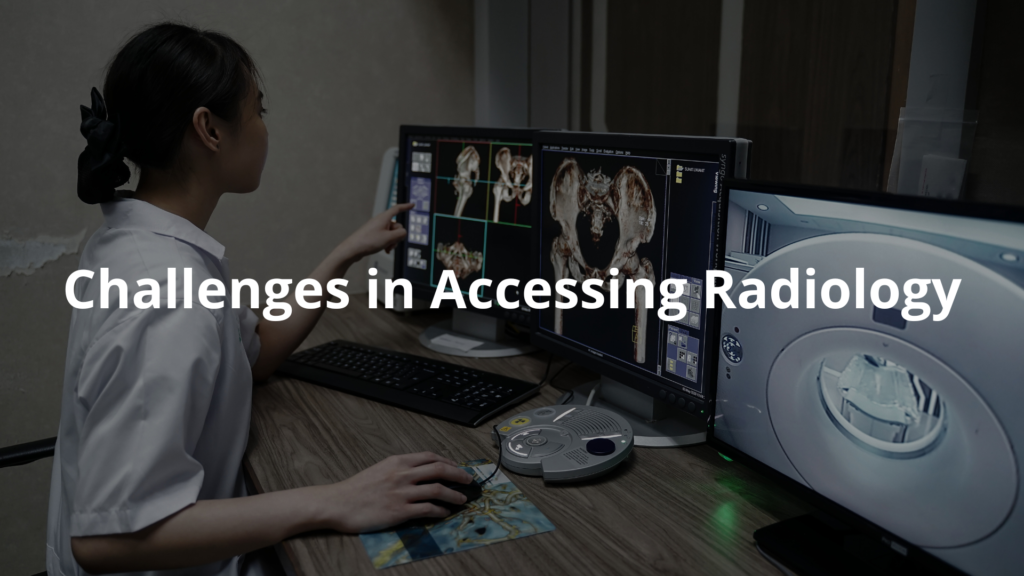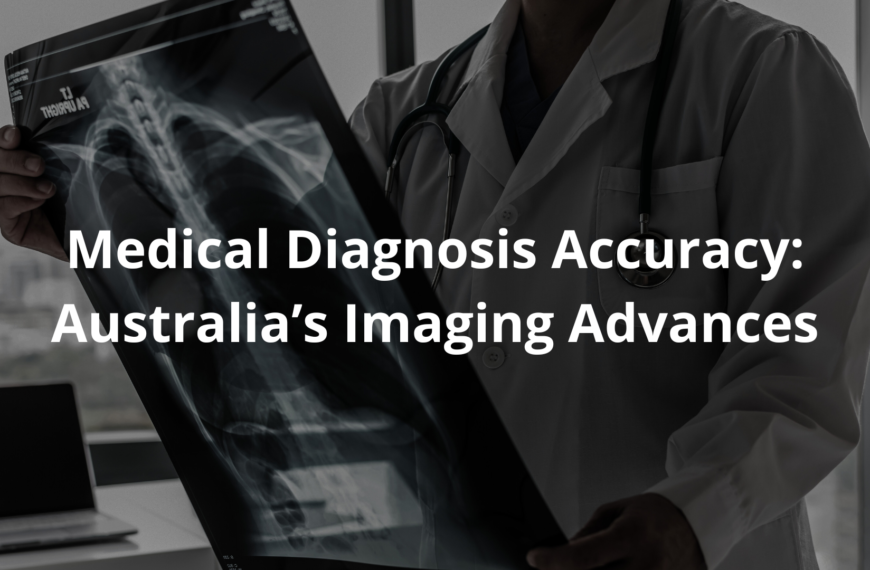Discover the importance of radiology in saving lives and enhancing patient care across Australia.
Radiology plays a big role in healthcare, especially across Australia. It offers a way for doctors to look inside the human body without needing surgery, using advanced machines to capture detailed images. These images, whether of bones, organs, or tissues, guide doctors in diagnosing illnesses and deciding on treatments. It’s not just about technology—it’s about helping people live healthier lives.
From broken bones to detecting diseases early, radiology supports patients in countless ways. Curious about how these machines work or the impact they have on everyday healthcare? Keep reading to uncover more about this fascinating field and its importance.
Key Takeaways
- Radiology helps doctors see what’s happening inside the body with pictures.
- It plays a big role in early diagnosis of diseases, like breast cancer.
- Radiology helps in planning treatments and checking how well they work.
The Role of Radiology in Healthcare
Radiology is a big part of medicine today. It uses special imaging tools to look inside the body, helping doctors take care of patients. These tools include:
- X-rays: Often used to check for broken bones or lung problems.
- CT scans: These give detailed pictures of injuries or illnesses inside the body.
- MRIs: Great for looking at soft tissues like the brain or muscles.
- Ultrasounds: Common for checking pregnancies or looking at organs.
- Mammograms: Help find breast cancer early.
Radiology helps doctors find diseases early, which can stop things from getting worse. For example, mammograms can catch breast cancer early, giving patients a better chance at recovery.
It’s also useful for planning treatments. By showing the exact size and location of something like a tumour, doctors can treat it more precisely. Plus, radiology helps track how well treatments are working, so doctors can make changes if needed.
From finding problems to checking progress, radiology is part of nearly every step in healthcare. [1]
How Radiology Helps Save Lives
One of the most amazing things about radiology is how it saves lives. Imagine someone has a bad car accident. A CT scan can quickly show if they have internal injuries. This information helps doctors act fast to save them.
It’s also a big help for cancer patients. Radiology can show if the cancer is shrinking or growing. If a treatment isn’t working, doctors can switch to something else. This way, patients get the care they need as soon as possible.
Radiology is even helpful during procedures. For example, when a doctor needs to take a biopsy (a small tissue sample to check for cancer), imaging makes it safer and more accurate.
In emergencies, radiology is a lifesaver too. If someone has chest pain, imaging can quickly check for heart problems. Acting fast in these moments can make all the difference.
The Many Types of Imaging Tests
Radiology uses different imaging tests, each with its own job. Here are the main ones:
- X-rays: Quick and simple, they’re great for looking at bones and lung issues. Often the first test when someone’s hurt.
- CT scans: These take lots of X-ray pictures to make detailed images. Perfect for spotting injuries or tumours inside the body.
- MRI scans: Use magnets and sound waves to show soft tissues like muscles or the brain. Often used for spinal or brain problems.
- Ultrasound: Uses sound waves to see inside. Common for checking unborn babies or organs like the liver.
- PET scans: Show how organs are working and can detect cancer. They help doctors understand what’s happening inside the body.
Each test gives doctors different information, and together they create a full picture of a patient’s health.
Importance in Early Diagnosis
Catching problems early is one of the best things radiology can do. For example, mammograms can find breast cancer before it spreads. Early treatment is often simpler and works better.
When diseases are found early, patients tend to recover faster. They can start treatment sooner, which can make a huge difference.
Studies show that early imaging often leads to better outcomes for patients. It can also save money because early treatments are usually less complicated and less expensive.
Radiology also helps doctors keep an eye on patients over time. This ongoing care is key for staying healthy and recovering fully.
Challenges in Accessing Radiology

Even though radiology is so important, not everyone can get it easily. There are a few reasons for this:
Access in Remote Areas
- People living in rural or remote places often struggle to find imaging services.
- They might have to travel long distances just to get a test.
High Costs
- Imaging tests can be expensive.
- Some people can’t afford them, which delays their diagnosis and treatment.
Long Wait Times
- Busy hospitals often have long waiting lists for imaging tests.
- This can be stressful, especially for patients who need answers quickly.
Efforts to Improve Accessibility
Healthcare providers are trying to fix these problems by:
- Building more clinics in rural areas.
- Offering programs to make imaging more affordable.
These changes aim to make radiology available to everyone who needs it. [2]
The Future of Radiology
Radiology is set to improve even more in the future. With new technology like machine learning, imaging tests could become faster and more accurate.
Doctors and medical students will need to keep learning about these advancements. Groups like the Royal Australian and New Zealand College of Radiologists (RANZCR) are working to make sure imaging services stay high-quality. [3]
As technology gets better, tests might take less time and show even clearer results. This could lead to better care for patients.
Telemedicine might also play a bigger role. Patients could consult with specialists without needing to travel far. Combining imaging with telemedicine could make healthcare easier and better for many people.
FAQ
What vital role do radiologists play in the medical specialty of diagnostic imaging?
Radiologists serve as expert interpreters of medical imaging, working closely with care physicians to analyze diagnostic images. They guide clinical decisions by examining everything from CT scans to breast imaging, helping doctors spot potential health issues. Their expertise in reading health images is crucial for early diagnosis and creating effective treatment options.
How do imaging exams and diagnostic tests help in disease detection?
Medical imaging provides real time insights into parts of the body, making it easier for doctors to spot foreign objects, heart disease, and other health concerns. These imaging studies use various technologies like sound waves and magnetic fields to create high quality images that are essential for patient safety and accurate diagnosis.
What type of radiology training do medical professionals receive during their year residency?
Medical school programs include extensive radiology training through medical education and hands-on experience. Future radiologists complete specialized training in nuclear medicine, radiation safety, and medical physics. The American Board certification ensures high level expertise in performing and interpreting imaging findings.
How does patient contact and decision support work in based radiology practices?
Radiologists maintain open access communication with primary care teams while ensuring patient safety. They provide diagnostic insights and treatment recommendations through imaging studies. Modern radiology practices use decision support systems to help doctors make informed clinical decisions about patient care.
What role does medical science and public health research play in radiology?
Research published in respected journals like Eur Radiol and Springer Nature (found via Google Scholar) advances radiological knowledge. Many studies are available through creative commons and white paper publications. This research, which you can cite this article for reference, helps improve health care practices in the United States and globally. The executive council of various radiology organizations helps set industry standards for cardiac imaging and radiation therapy.
Conclusion
In conclusion, radiology is a vital part of healthcare in Australia. It helps doctors diagnose, plan treatments, and monitor patients effectively. Despite challenges in access and costs, the role of radiology continues to grow. By improving patient outcomes and making early detection possible, radiology truly saves lives. Remember, the next time you hear about an imaging test, think about how it helps keep people healthy!
References
- https://xray.com.au/importance-of-medical-imaging/
- https://www.ama.com.au/media/vital-role-diagnostic-imaging-health-care-must-be-recognised-and-supported
- https://www.safetyandquality.gov.au/sites/default/files/2022-08/literature_review_-_safety_and_quality_in_diagnostic_imaging.pdf




